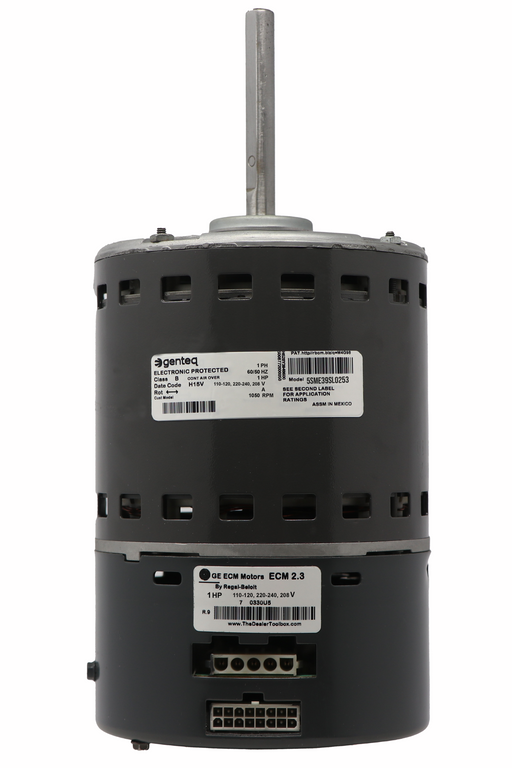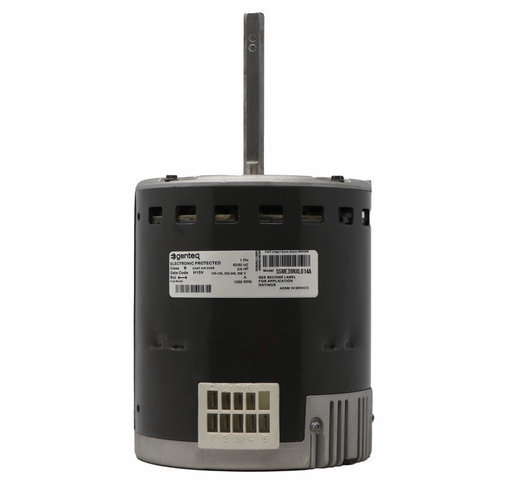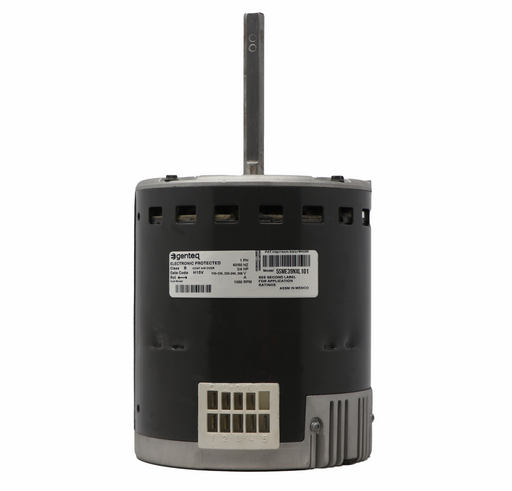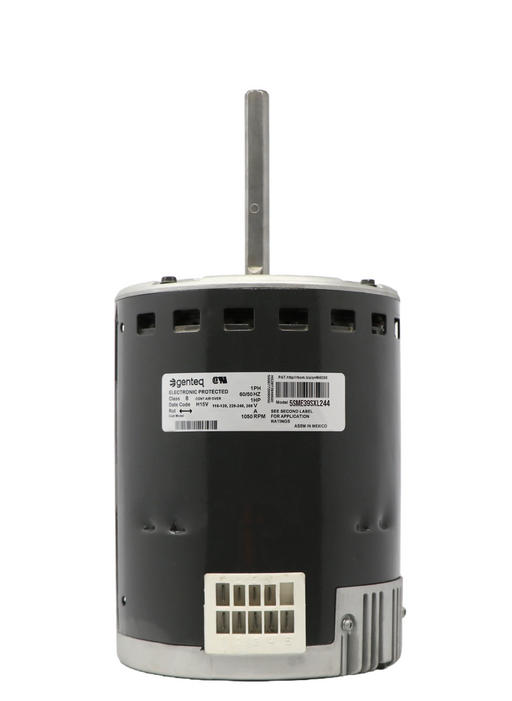(813) 440-8108

Troubleshooting an HVAC Fan Not Working: Common Causes and Solutions
When your HVAC fan stops working, it can lead to uncomfortable indoor temperatures and inefficient system performance. Identifying and addressing the underlying issue promptly is crucial to restoring comfort and functionality. This guide will walk you through common reasons why your HVAC fan might not work and provide practical solutions to troubleshoot and fix the problem.
This article will cover potential causes of HVAC fan failure, including electrical issues, mechanical failures, and thermostat problems. We’ll also offer step-by-step instructions for diagnosing and resolving these issues and tips on when to call a professional for help.
Common Causes of HVAC Fans Not Working
1. Electrical Issues
Electrical problems are a common reason for HVAC fan failure. These issues range from blown fuses to tripped circuit breakers and faulty wiring.
- Blown Fuses: Check your HVAC system's fuses. A blown fuse can stop the fan from operating.
- Tripped Circuit Breaker: Ensure the circuit breaker is in the "on" position. Reset it if necessary.
- Faulty Wiring: Inspect the wiring for signs of wear or damage. Loose or damaged wires can disrupt power flow to the fan.
2. Thermostat Problems
The thermostat controls the HVAC system, including the fan. If it’s not functioning correctly, the fan won’t work.
- Incorrect Settings: Ensure the thermostat is set to the correct mode (cooling or heating) and the fan setting is on.
- Dead Batteries: Replace the thermostat batteries if they are dead.
- Malfunctioning Thermostat: Test the thermostat by adjusting the temperature settings. If the fan doesn’t respond, the thermostat might need replacement.
3. Mechanical Failures
Mechanical issues within the HVAC system can also cause the fan to stop working.
- Blower Motor Issues: The blower motor may be burnt out or malfunctioning. Listen for unusual sounds, which can indicate motor problems.
- Capacitor Problems: The capacitor provides the necessary power to start the fan. A faulty capacitor will prevent the fan from operating.
- Fan Belt Issues: Inspect the fan belt for wear and tear. A broken or loose belt can stop the fan from spinning.
👉🏻 Read More: Upgrading Your HVAC Blower Motor: Benefits, Selection Tips, and Financial Considerations
Detailed Troubleshooting HVAC Fan Table
|
Issue |
Symptoms |
Diagnostic Steps |
Potential Solutions |
|
Blown Fuse |
No fan activity |
Check fuse box, replace blown fuse |
Replace fuse |
|
Tripped Circuit Breaker |
No power to the HVAC system |
Reset the circuit breaker, inspect for tripping |
Reset the breaker, investigate the cause |
|
Faulty Wiring |
Intermittent power, no power |
Inspect wiring for damage, test continuity |
Repair or replace wiring |
|
Thermostat Issues |
Incorrect temp reading, no response |
Adjust settings, replace batteries, test functionality |
Replace batteries or thermostat |
|
Blower Motor Issues |
No airflow, unusual noises |
Listen for noise, inspect the motor visually |
Replace blower motor |
|
Capacitor Problems |
The fan won’t start |
Test with multimeter |
Replace capacitor |
|
Fan Belt Issues |
No fan movement |
Inspect the belt for wear, check the tension |
Replace or tighten the fan belt |
Troubleshooting Steps
Step 1: Safety First
- Turn Off Power: Switch off the HVAC system at the breaker box to avoid electrical shocks.
- Wear Protective Gear: Use safety gloves and goggles when inspecting and repairing your HVAC system.
Remanufactured Motor by United HVAC Motors
2 Year Replacement Warranty (Terms Apply)
Plug n Play - 100% Programmed
Match your Motor Model N...
Remanufactured Motor by United HVAC Motors
2 Year Replacement Warranty (Terms Apply)
Plug n Play - 100% Programmed
Match your Motor Model N...
5SME39NXL014A GE Genteq Blower Motor ECM X13 3/4 HP
5SME39NXL101 GE Genteq Blower Motor ECM X13 3/4 HP
Step 2: Check Electrical Components
- Inspect Fuses and Circuit Breakers: Replace blown fuses and reset tripped circuit breakers.
- Examine Wiring: Look for loose or damaged wires and secure or replace them.
Step 3: Evaluate the Thermostat
- Confirm Settings: Ensure the thermostat is set to the appropriate mode and temperature.
- Replace Batteries: Install new batteries if the current ones are dead.
- Test Functionality: Adjust the temperature settings to see if the fan responds. If it remains unresponsive, replace the thermostat.
Step 4: Inspect Mechanical Components
- Examine the Blower Motor: Listen for unusual noises and check for any signs of damage. Replace the motor if necessary.
- Check the Capacitor: Use a multimeter to test the capacitor's functionality. Replace it if it's not working correctly.
- Inspect the Fan Belt: Look for wear and tear. Replace the belt if it's broken or loose.
When to Call a Professional
If you can’t identify or fix the issue after following these troubleshooting steps, it’s time to call a professional HVAC technician. Professionals have the tools and expertise to diagnose and repair complex problems, ensuring your system is restored to full functionality.
👉🏻 Read More: How to Test Your HVAC Blower Motor: A Step-by-Step Guide
Conclusion
Understanding the common causes of HVAC fan failure and how to troubleshoot them can save you time and money while maintaining your home's comfort. Regular maintenance and prompt attention to issues can prevent significant problems. For those experiencing persistent issues, explore our website's selection of high-quality HVAC components and replacement parts to find the right solution for your needs.
5SME39SXL224 GE Genteq Blower Motor ECM X13 1 HP
Remanufactured Motor by United HVAC Motors 2 Year Replacement Warranty (Terms Apply) Plug n Play - 100% Programmed Match your Motor Model N...
View full detailsTo confirm product availability please call (813)440-8108. Some items might be in stock but not yet prepared to be shipped.

 Sold out
5SME39SL0253 GE Genteq Blower Motor ECM 2.3 1 HP
Sold out
5SME39SL0253 GE Genteq Blower Motor ECM 2.3 1 HP
5SME39SL0253 GE Genteq Blower Motor ECM 2.3 1 HP
Remanufactured Motor by United HVAC Motors 2 Year Replacement Warranty (Terms Apply) Plug n Play - 100% Programmed Match your Motor Model N...
View full details



